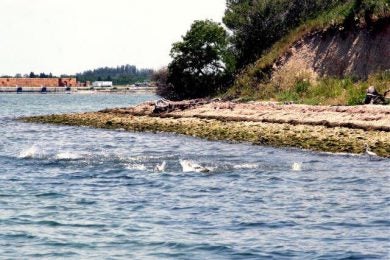Watch Nature’s Signs for Good Fishing
Bob McNally 06.24.16

Spotting frenzied bait fleeing from predator fish, getting casts to them, and hooking up happens countless times to anglers in saltwater and freshwater daily. But while such incidents are common and comparatively easy to identify, there are many other, though more subtle, “signs” on the water that can lead to good catches quickly for observant anglers.
A simple swirl beside a lily pad or flooded cypress knee should alert bass anglers that a gamefish may be feeding or moving through shallows hunting a meal. A frog that leaps from floating pads may be spooked by bass cruising below it, which is a sign to cast in that direction.
Panfish bumping bulrush stems or softly sucking tiny insects from the surface can lead to quick strikes and fish for the kettle for an angler who notices such minimal fish disturbances.
Sound also can lead an angler to feeding fish. Anglers with ears “tuned” to the water often hear a non-mullet splash and quickly look for the source. Hear the splash another time or two, and it’s time to carefully investigate the cause for the commotion–rods ready for fast casts.
Birds are among the most reliable and abundant tipsters to feeding fish activity. Spend time watching the Discovery Channel on television and you’ll view swirling gulls, terns, gannets, and others as they dive for baitfish. It’s thrilling to watch and are an obvious beacon to fish feeding activity that can lead to great angling action.
But birds of a wide variety and living in remarkably different habitats can be important calling cards for anglers looking for fish. Tiny terns flitting above the water and picking at baitfish may lead anglers to gamefish feeding beneath the forage fish. Diving pelicans, ospreys, and eagles are a sure signal that larger baitfish are the targets, and that can lead to bait pods of shad, menhaden, mullet, or other species that can have bass, stripers, trout, salmon, tarpon, cobia, little tunny, sharks, and other big species chowing down, too.
Wading birds clustered along a bank are there to pluck hapless bait from the water. It’s a sign that current or tide is making aquatic forage vulnerable to predators, and feeding fish are likely to be found near the bank feasting near their feathered friends. Sometimes bald eagles stand on shorelines looking for fish washed up by wind or current, and that may lead to a hot fishing spot.

